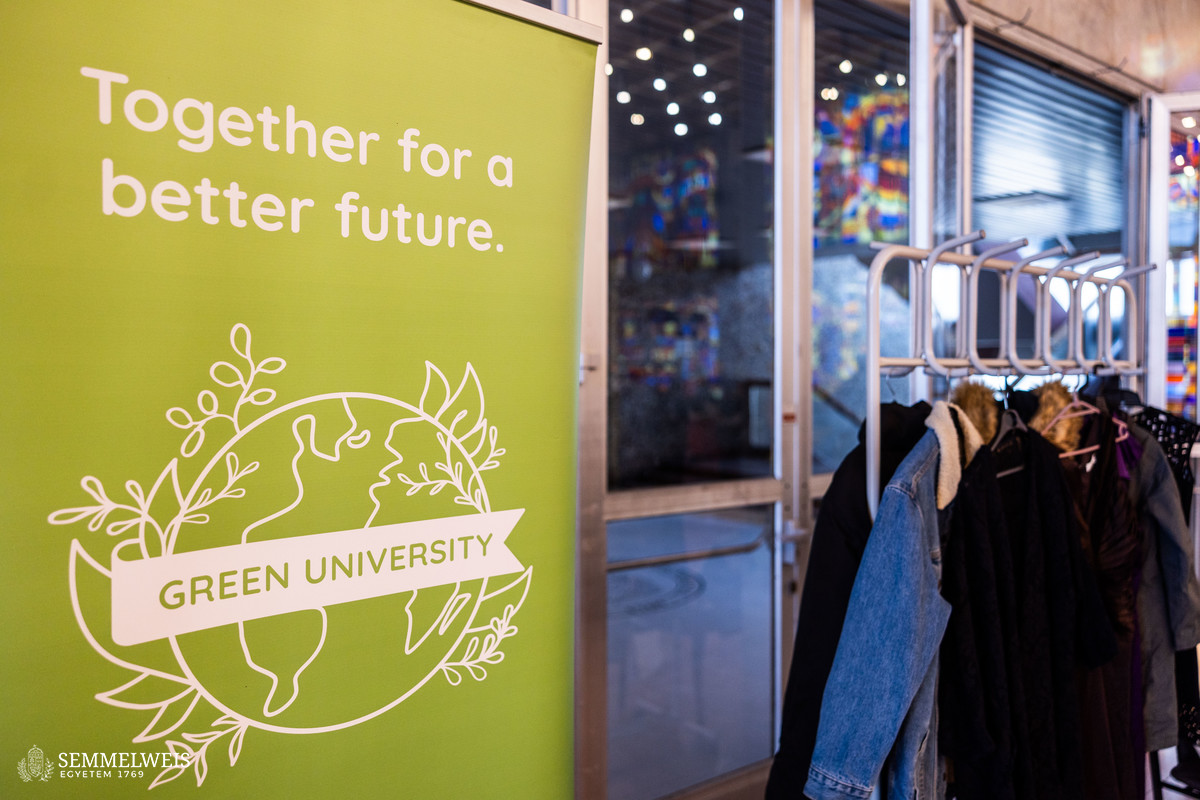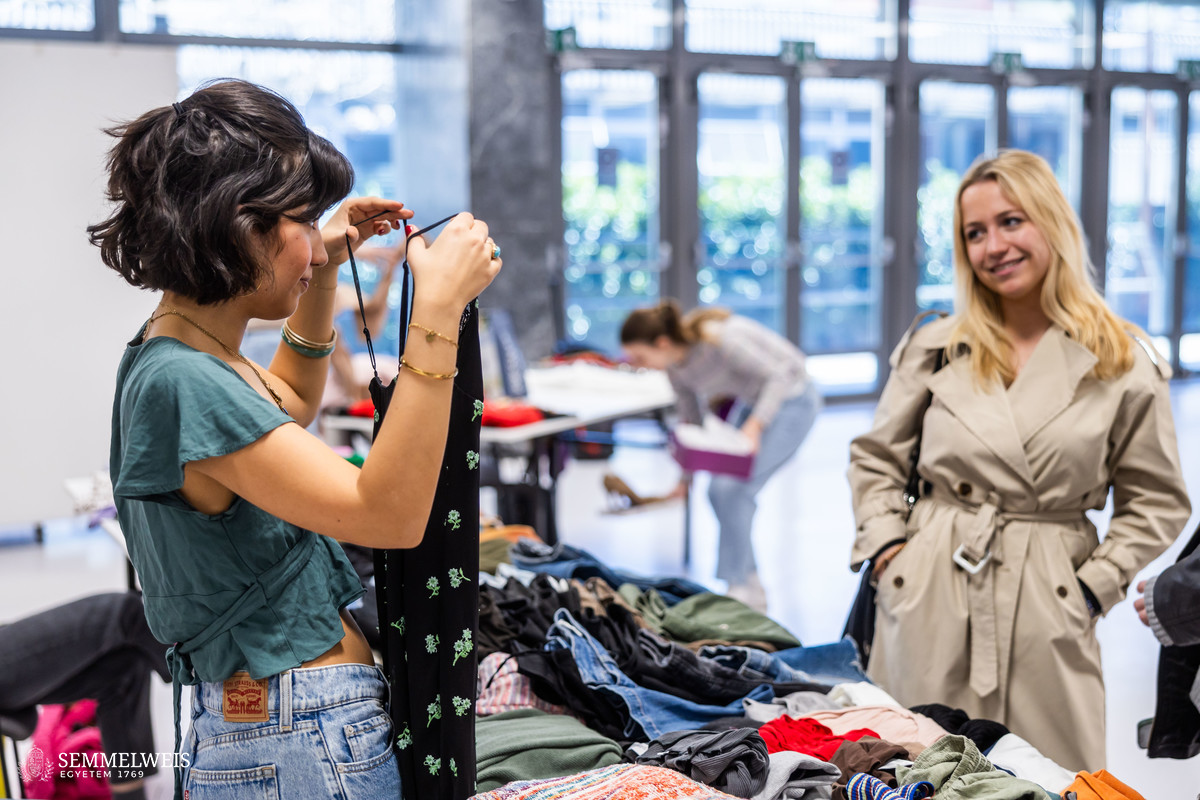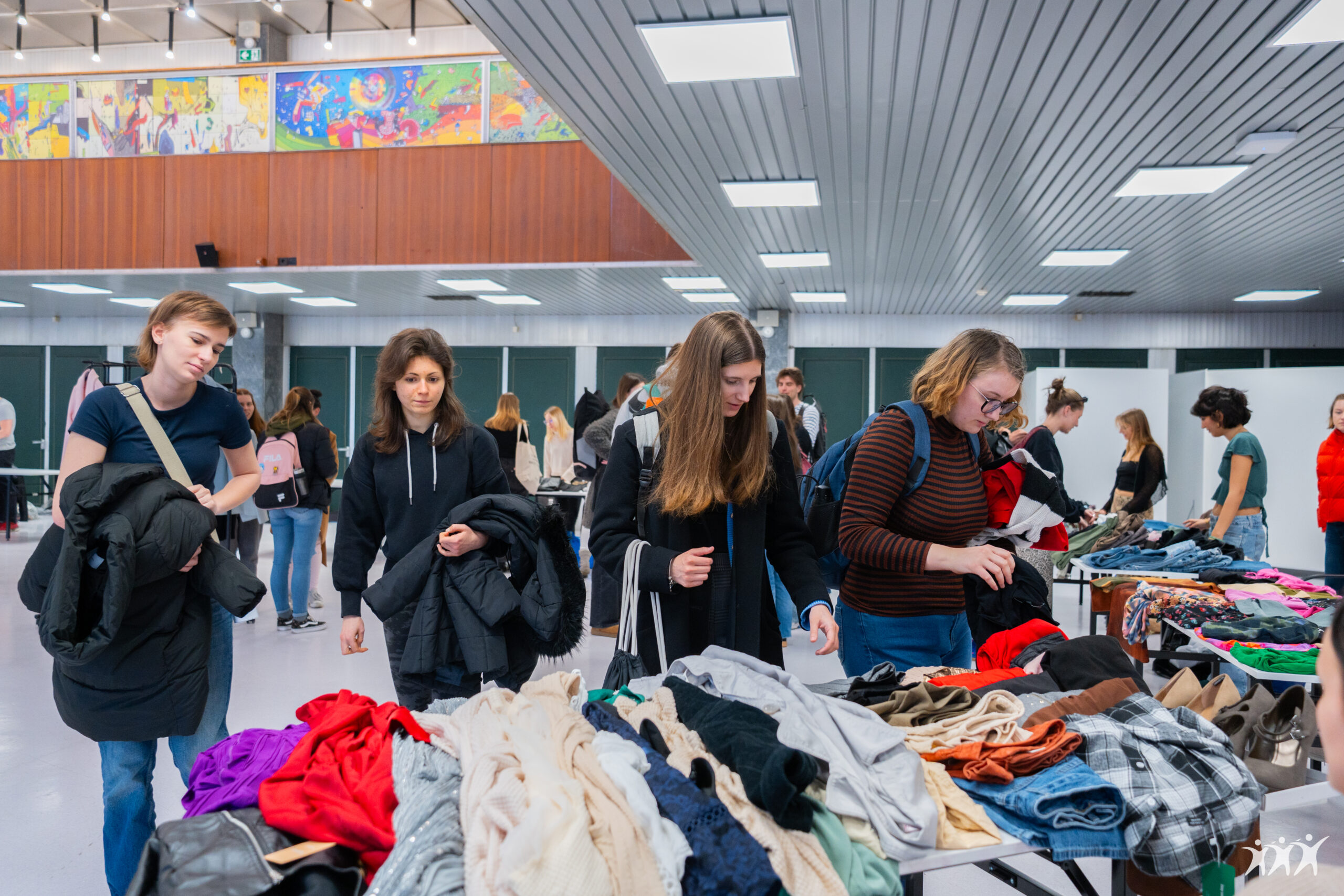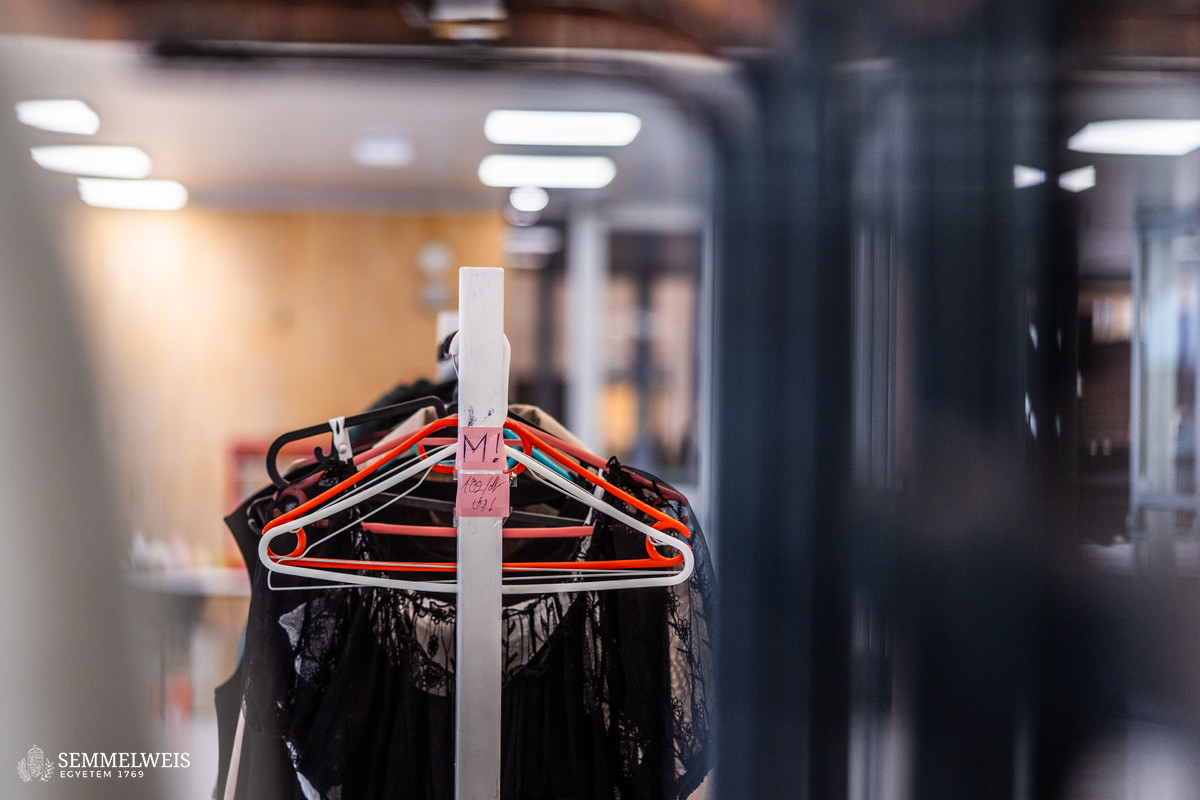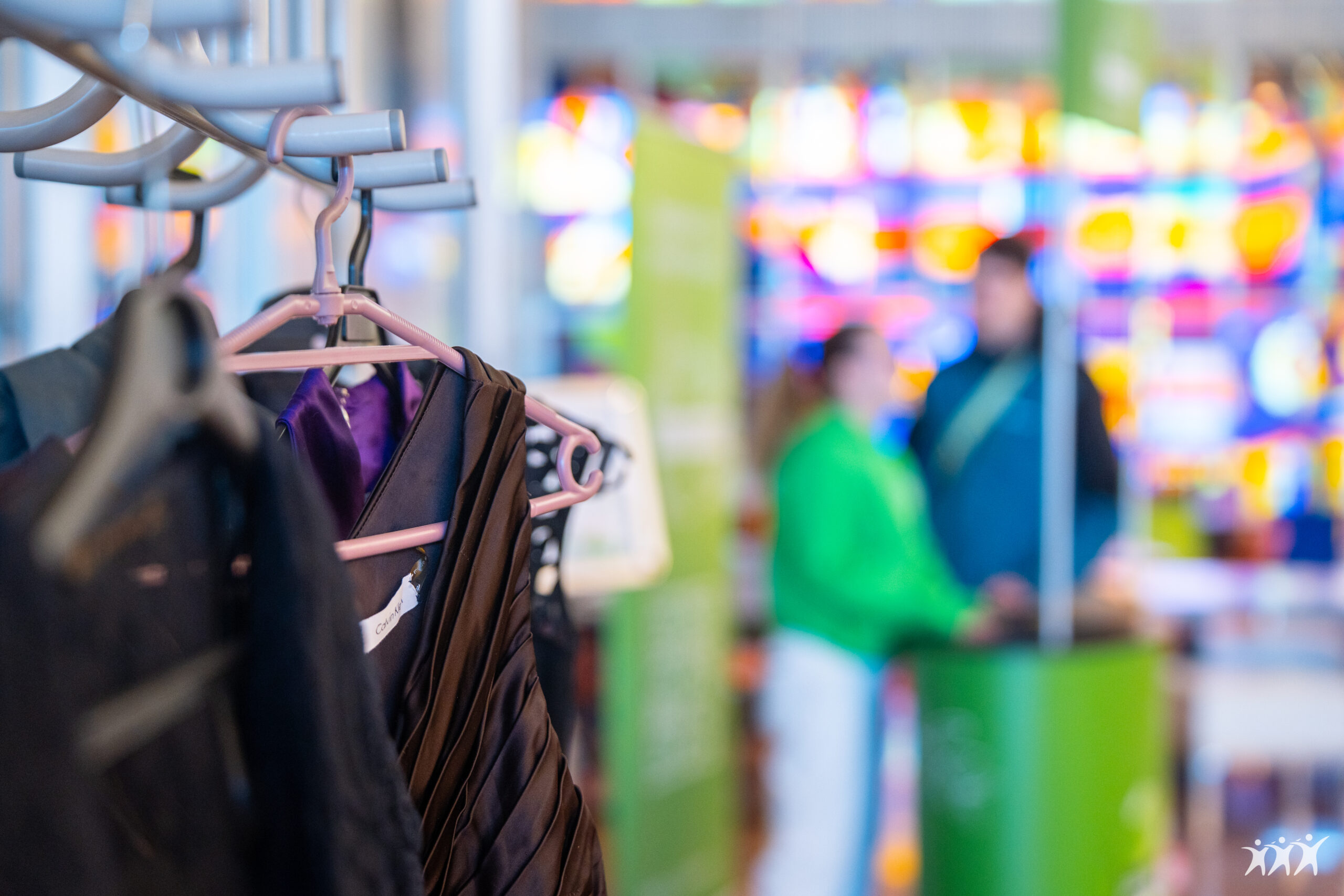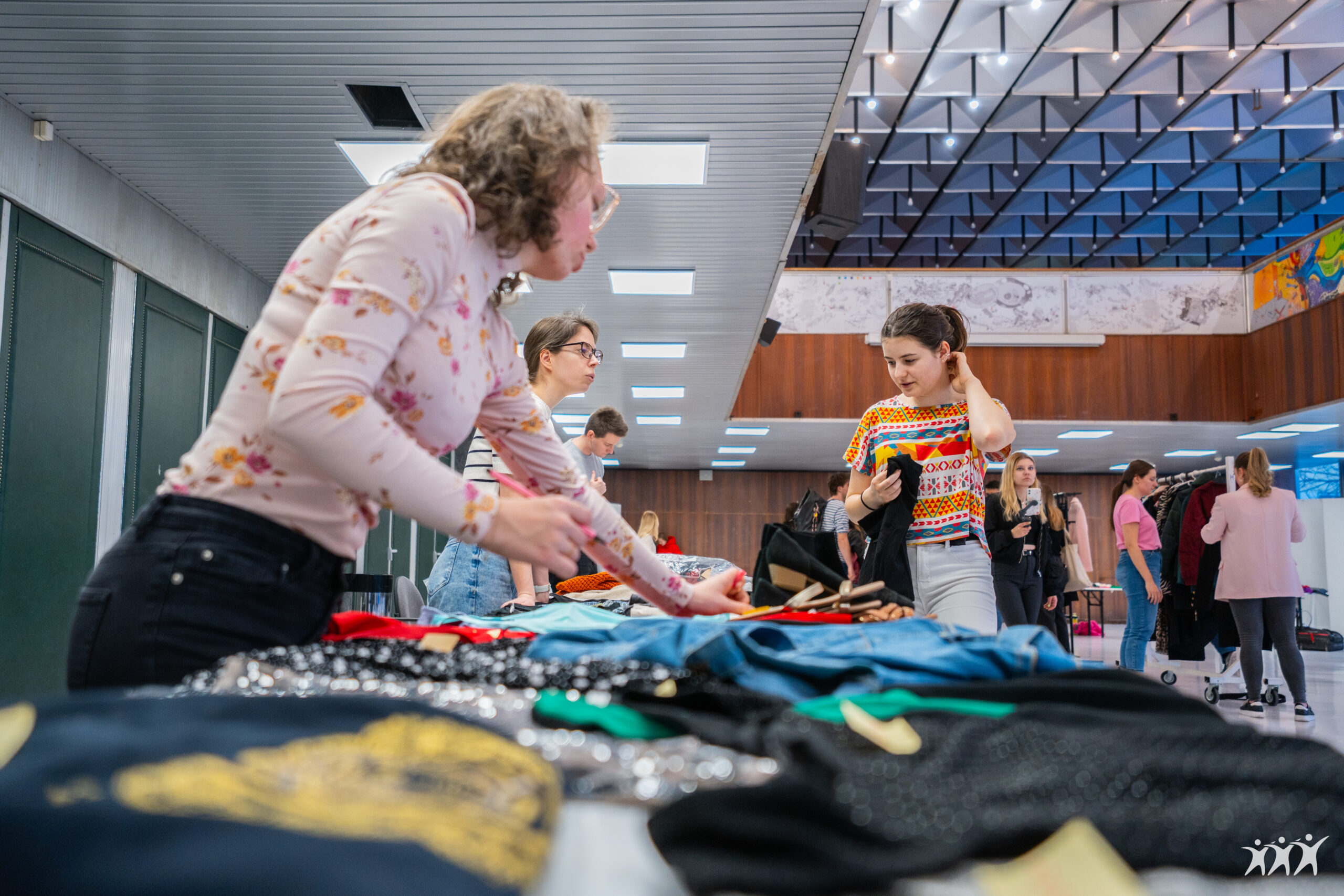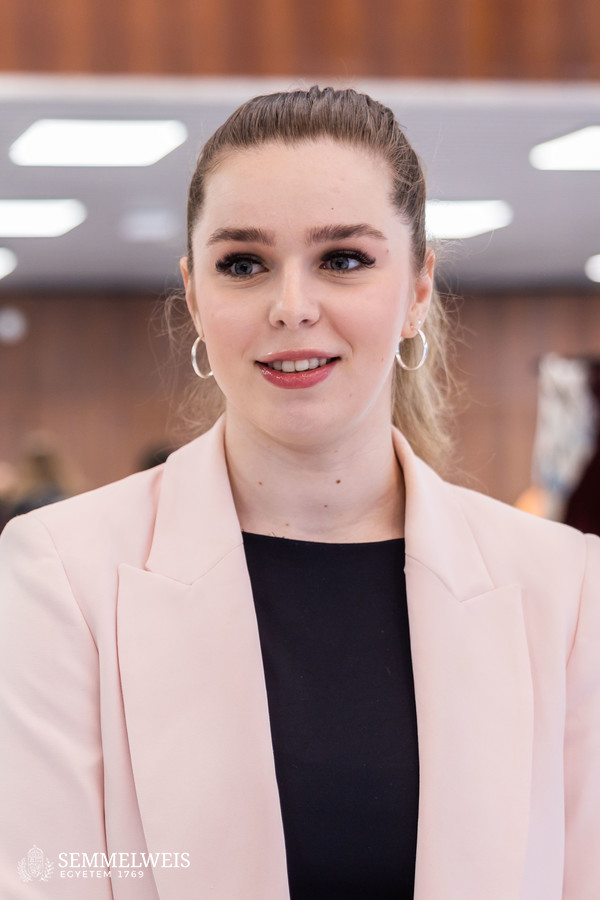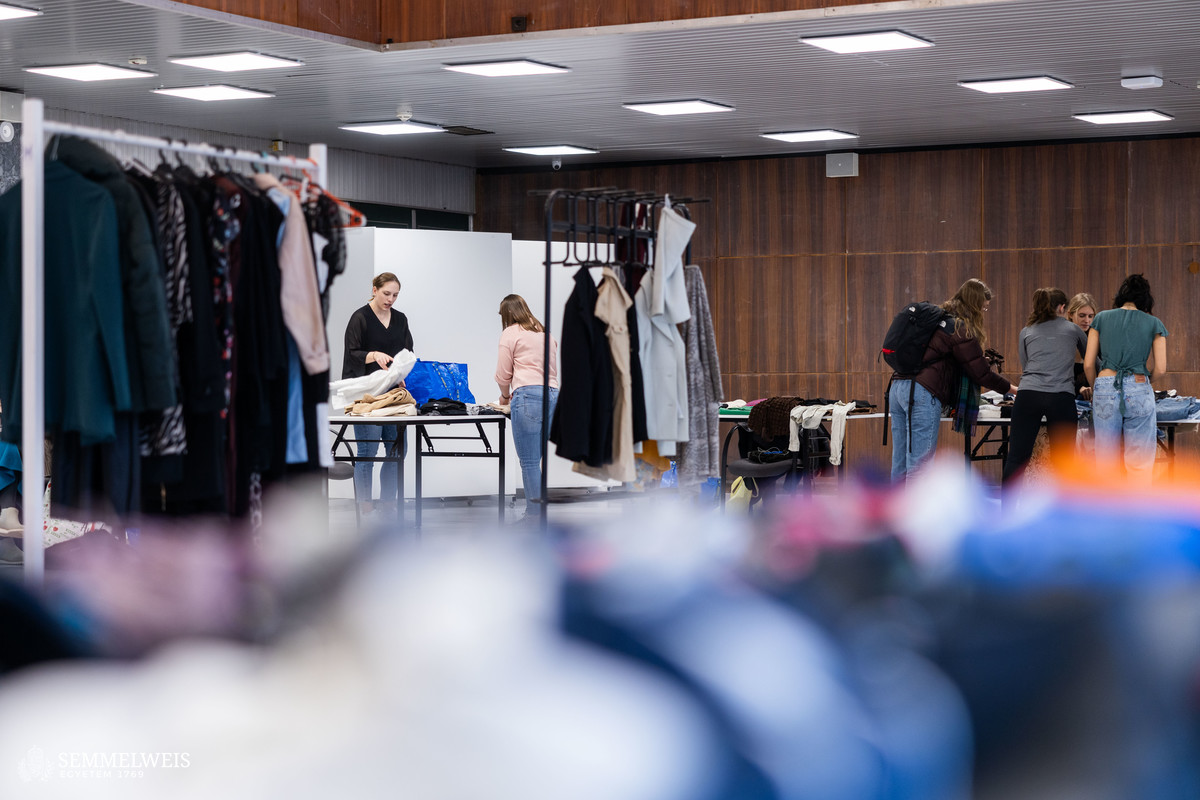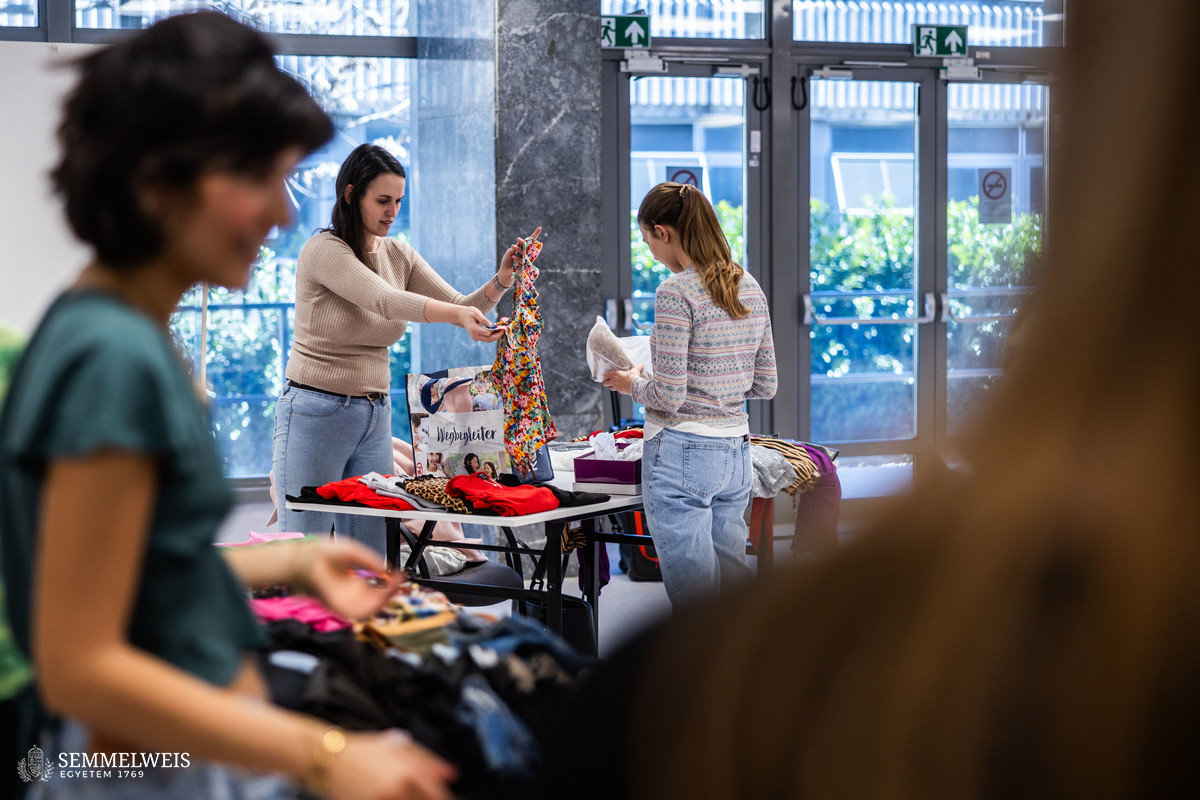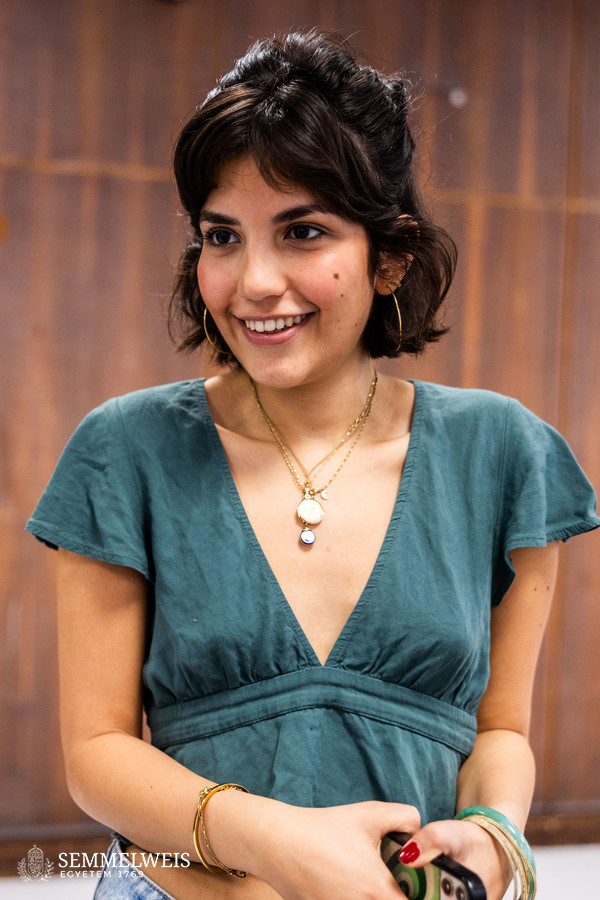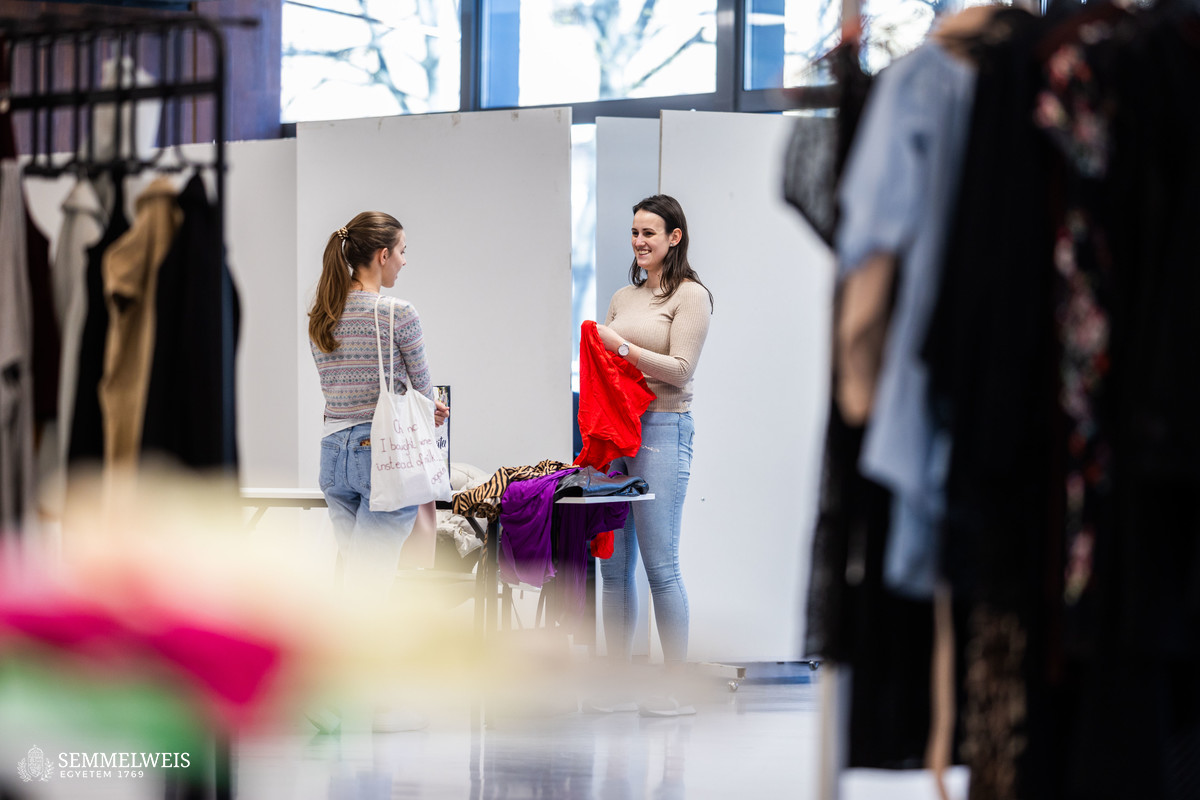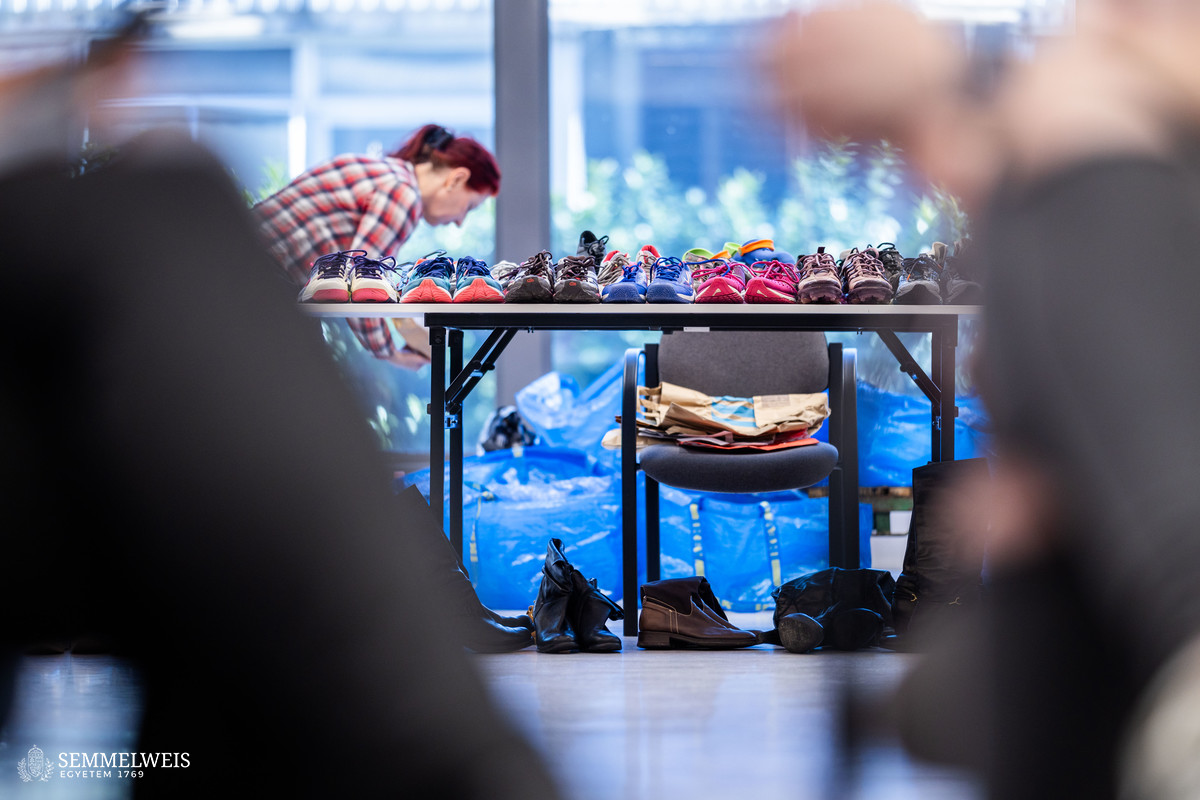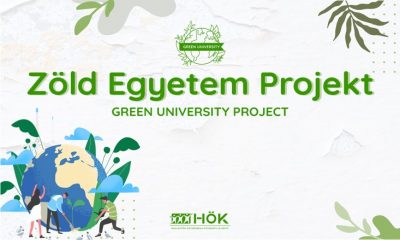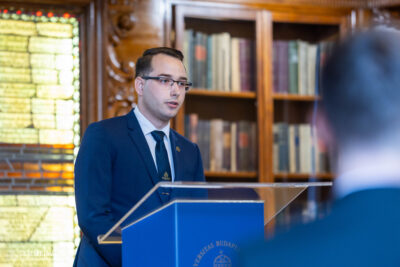The 2025 spring semester of the Green University Project’s extracurricular event series kicked off with a Vintage Market on March 20-21, attracting hundreds of students and staff. Our guide at the event was Renáta Dalma Miklós, now a fourth-year student at the Faculty of Pharmaceutical Sciences, who has headed the project for almost two years. She took over leadership from project initiator and driving force Imre Richárd Nagy, now General Vice-President of the Students’ Union (HÖK). Before we delve into the treasure hunt, Renáta Miklós gives an overview of the progress achieved by their team of 30.
The Green University Project operates under HÖK. Its six-member management team includes designated coordinators for logistics, education, and media, as the project appears on all social media surfaces of the Students’ Union. Its more than twenty project members represent all faculties of the university. Besides offering thematic activities, the team regularly sets up its stand at student events like the Carnival or the Freshman Camp, where they invite attendees to play games for sustainable prizes like reusable cups or bamboo cutlery sets.
All of our events are open to students from all language programs. In my experience, international students are actively engaged in all green projects. – Renáta Miklós
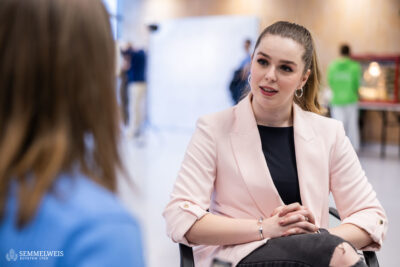 The project leader shares that the 2021 initiative has evolved from its humble beginnings as a two-credit elective course to a wide spectrum of activities, including the Summer University, markets, community programs, awareness raising, and much more. The project’s social media platform, which has attracted an online – and offline – community of more than 2,500 members, all current and former Semmelweis Citizens, allows the team to keep members updated and raise consciousness about sustainability, with topics such as recycling or protecting wildlife. They use these occasions to share some everyday low-effort tips that may still make a difference, like the use of water bottles, which has become much more prevalent compared to the time when Renáta Miklós was a fresher.
The project leader shares that the 2021 initiative has evolved from its humble beginnings as a two-credit elective course to a wide spectrum of activities, including the Summer University, markets, community programs, awareness raising, and much more. The project’s social media platform, which has attracted an online – and offline – community of more than 2,500 members, all current and former Semmelweis Citizens, allows the team to keep members updated and raise consciousness about sustainability, with topics such as recycling or protecting wildlife. They use these occasions to share some everyday low-effort tips that may still make a difference, like the use of water bottles, which has become much more prevalent compared to the time when Renáta Miklós was a fresher.
One of the flagship events is Green University Day, which debuted last year as Day Zero of the 6th Summer University in two languages, featuring 24 speakers. Thanks to its success, it is planned to be incorporated into the 2025 Semmelweis Summer University as Day 1.
The “Green University – Together for Our Environment” elective course has remained an integral part of the project, available for 150 students each semester. The course is so popular that all spots are booked in a few seconds. This spring, the practice-oriented workshops are supplemented with theoretical lectures, both in English and Hungarian, where the speakers offer a glimpse into different perspectives of green consciousness from activism through nature photography to less-waste fashion. The course, whose completion requires attending at least two practical sessions and one lecture, is open to all language programs, with 80 Hungarian, 50 English, and 20 German-language participants. The practical sessions are usually offered in English, making it possible for participants from all language programs to network.
One such non-lecture session, open to not just course attendees but also anyone interested, is hiking through the Buda hills, starting in spring.
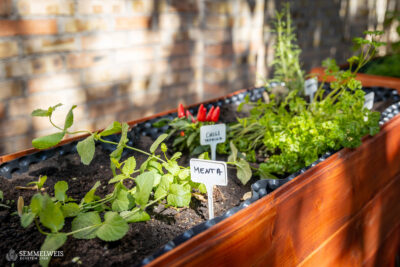
Another outdoor activity is community gardening, done in collaboration with the Park Maintenance Department at the Directorate of Services as a key partner. This offers an opportunity to install raised bed gardens and spruce up the outdoor spaces at the university dormitories. One recent example of the latter was the opening of an outdoor fitness park a few months ago, which was realized as a cooperation between the Directorate of Dormitories and the Green University Project and was supported and coordinated by the Students’ Union. These efforts are directed at making community places more environmentally conscious. For instance, more than a hundred selective waste bins have been installed on university premises. Plans also include renewing the drinking fountain at the Basic Medical Science Center’s library, making it easier for students to refill their water bottles.
Besides caring for university citizens and premises, the Green University Project also attaches importance to community engagement. They regularly organize litter cleanups in parks and plan to join the nationwide cleanup campaign this spring, the project leader points out.
Jessica is a second-year medical student in the German program. “Since I have a lot of stuff I don’t want or need anymore, I thought it would be a good opportunity to give it a new home. It’s the first time that I have participated in a Green University event. I’ve heard a lot about it previously. In my everyday life, I regularly opt for second-hand myself. I’m also conscious about my food choices, I’m looking for local and seasonal produce.”
Community transport is a major part of Nilofer Bunyadi’s green routine. Besides being a regular thrift shopper, she also uses online platforms to sell her pre-loved items. “It’s my first time at the Vintage Market; I just saw it yesterday on the ‘studentsofsemmelweis’ Instagram page. I’m excited to see how it turns out,” says the second-year medical student.
The Vintage Market is organized for the third time, enabling students – and from this year, staff – to sell their fashion items and thus reduce their environmental footprint. Donated clothes accumulating during the event will then be gifted to a women’s shelter, making it another perfect example of community outreach characterizing the Green University Project.
Judit Szabados-Dőtsch
Photos by: Bálint Barta – Semmelweis University, Midián Ruha – Students’ Union; cover by Midián Ruha – Students’ Union
